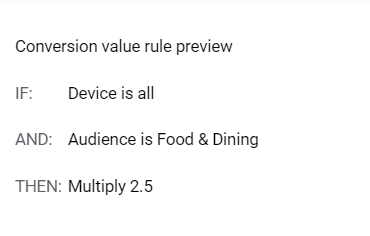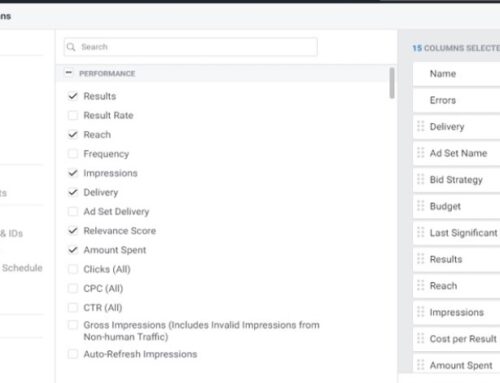Conversion value rules
Google has released a new setting for conversion values this week. Advertisers are now able to adjust conversion values base on user characteristics. “Not all conversions are worth the same—some are more valuable than others. Accurately expressing this value can help you optimize campaigns and evaluate performance based on the goals that matter most to your business. To make this easier for you, you can adjust conversion values based on characteristics like location, device, and audience.” – Stephen Chang, product manager of Google Ads.
Currently, conversion value rules only apply to Search, Shopping and Display campaigns.


Once set up, your conversion actions table will show the updated conversion values based on your new adjustments. Smart bidding such as Target ROAS, TCPA will now optimize for these new values. There are currently 2 options to adjust your values; multiply and addition. So if you set a multiplier or addition rule to the values, you can expect smart bidding to bid more aggressively when users are within those segments.
Conversion value rules only apply to audience, location or devices. You can add up to 2 conditions together, and they will work as an ‘AND’ criteria. For example, if you set the “Food & Dining” audience and a secondary condition of location “Canada” then the user must meet both conditions to apply the new conversion value rule.
If you only use a primary condition without a secondary, then everything inside will work as an “OR” criteria.

Some more notes from Google:
- You can set a maximum of 2 conditions per rule. The secondary condition is optional
- When setting a rule, once you choose your primary condition type, your secondary condition must be a different type. For example, if your primary condition type is Location (eg, “California”), your secondary condition cannot also be Location.
- Once you create a value rule, all subsequent value rules must have the same conditions.
- You can select more than one option when setting up the rule. The rule will treat each option as an “or” in the preview section. For example, if you select “New York” and “California”, the rule will apply for customers in New York or California.
- You can adjust values with integers as well as percentages.
- If you currently use conversion value with Smart Bidding, particularly Target ROAS bidding or Maximize conversion value bidding, you can apply conversion value rules to optimize toward users who are more valuable to your business. Learn more about the impact of conversion value rules on Smart Bidding.
Only 1 rule can be applied in any conversion
What happens if a customer conversion meets multiple value rules? Let’s say you set up 3 in your account and a conversion meets the criteria of “2x” and “1.5x” conversion value. In this case, only 1 rule can be applied. The more restrictive and targeted rule will apply before the rest. Here are a few examples.
Location rules
Which rule applies?
The most precise location rule is applied. In this example, the rule for California would be applied since that is more specific than the rule for the United States.
Audience rules
Which rule applies?
The existing audience attribution hierarchy will be used:
- Customer Match
- Remarketing and similar audiences (including Google Ads and YouTube)
- Affinity and in-market audiences
- Detailed demographics audiences.
If there is a tie between two rules, a “Multiply” rule will be selected over an “Add” rule. If there is still a tie (meaning more than 1 “Multiply” rule), the rule with the highest multiplier adjustment will be selected.
Device rules
Why is this important?
This update reduces some autonomy and gives advertisers control on assigning different conversion values based on audience, location and devices. However, there is a caveat. If you set it incorrectly, you can cause smart bidding to bid overly aggressively for audiences that may otherwise be more profitable without the adjustment. So, our advice to advertisers is only to adjust when they are sure that the setting is applicable to their case.
Unless advertisers have solid data that any of the 3rd party audiences is actually more valuable than the rest or that audiences in specific locations actually spend more, this new feature can only be an estimation.
Our advice is to start more granular on user characteristics that you are sure (even better, have proven data) of higher performance and better conversion values. Nonetheless, the best way to know if it fits you is to test it out in your ad accounts today.





